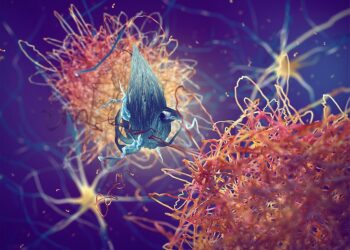# The Ouroboros Effect: Is AI’s Synthetic Data Future a Recipe for Model Collapse?
The generative AI landscape is expanding at an explosive rate. Every day, Large Language Models (LLMs) produce a torrent of text, images, and code that populates our digital world. This synthetic content is often indistinguishable from human-created work, a testament to the power of modern architectures. But as we stand on the precipice of this new era, a critical question looms: What happens when the student becomes the teacher? As AI-generated data saturates the internet—the very training ground for future models—we risk creating a recursive feedback loop that could lead to a phenomenon known as **Model Collapse**.
This isn’t merely a theoretical curiosity; it’s a potential bottleneck for progress, an issue some researchers have grimly nicknamed “Habsburg AI,” alluding to the genetic degradation that resulted from generations of royal inbreeding.
—
### The Anatomy of Collapse
At its core, Model Collapse describes the gradual degradation of a model’s quality and diversity when it is recursively trained on data generated by its predecessors. To understand why this happens, think of it like making a photocopy of a photocopy. The first copy looks nearly perfect, but with each successive iteration, subtle imperfections are amplified, colors fade, and details blur until the final image is a distorted, washed-out version of the original.
In the context of LLMs, the “original” is the vast, messy, and wonderfully diverse distribution of real human data. A model trained on this data learns to approximate this distribution. However, it’s never a perfect approximation. The model will inevitably smooth over some of the rough edges, miss the long-tail outliers, and develop subtle biases based on its architecture and training process.
When a next-generation model is trained on a dataset contaminated with synthetic data from the first model, it isn’t learning from reality anymore. It’s learning from an *approximation of reality*. The process introduces two key failures:
1. **Loss of Diversity:** Models tend to favor high-probability outputs. Over successive generations, the training data becomes dominated by these “average” examples. The rare, quirky, and novel information—the “tails” of the distribution—gets forgotten. The model’s understanding of the world shrinks and converges toward a bland mean. For instance, a model might forget about obscure historical facts or niche artistic styles because they weren’t prominent enough in the synthetic data it ingested.
2. **Amplification of Artifacts:** Every model has its own unique “tells” or artifacts—stylistic quirks, repetitive phrasing, or latent biases. When a new model trains on this output, it learns these artifacts as ground truth. This feedback loop can cause biases and errors to become deeply entrenched and amplified, leading to a distorted and increasingly unreliable view of the world.
Early studies have already demonstrated this effect. Researchers at Stanford and Rice University found that models recursively trained on their own output quickly “forget” the true underlying data distribution, suffering a significant drop in performance and outputting increasingly homogenous content.
### Navigating the Synthetic Future
The threat of Model Collapse doesn’t mean synthetic data is inherently bad. In fact, it can be incredibly useful for augmenting datasets, filling knowledge gaps, and fine-tuning models for specific tasks. The danger lies in its *uncontrolled proliferation* and our inability to distinguish it from authentic human data. So, what can we do? The path forward requires a multi-pronged strategy focused on data hygiene and architectural innovation.
* **Data Provenance and Curation:** The single most important defense is a robust system for data provenance. We need reliable methods to track and label the origin of data, distinguishing between human-generated, AI-assisted, and purely synthetic content. Going forward, the value of pristine, well-curated, and verifiably human datasets will skyrocket. These will become the gold standard for benchmarking and preventing distributional drift.
* **Strategic Data Synthesis:** Instead of blindly scraping the web, future data strategies should involve using AI to generate data that specifically targets and fills existing knowledge gaps. This “active learning” approach uses synthetic data as a scalpel, not a sledgehammer, to enhance rather than dilute the training pool.
* **Robust Model Architectures:** Research into models that are inherently more resilient to distributional shifts is crucial. Techniques that encourage models to maintain diversity and explicitly account for uncertainty in their training data could provide a buffer against the degenerative effects of recursive loops.
—
### Conclusion
The current paradigm of “bigger is better”—training ever-larger models on ever-larger scrapes of the internet—is unsustainable in a world awash with synthetic media. Model Collapse is a serious challenge that threatens to lead us into an era of AI stagnation, where models do little more than regurgitate increasingly distorted echoes of past knowledge.
To avoid this Ouroboros-like cycle of self-consumption, we must shift our focus from the sheer quantity of data to its quality, diversity, and provenance. The future of AI doesn’t just depend on building better models, but on being smarter, more deliberate curators of the digital world we are collectively building.
This post is based on the original article at https://www.technologyreview.com/2025/09/18/1123844/meeting-vaccine-guidance-former-cdc-leaders-alarmed/.






















